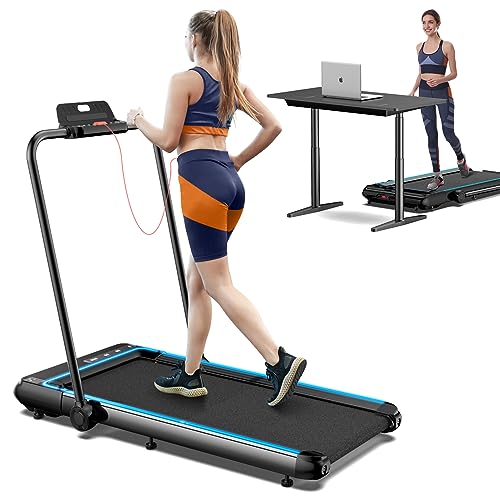- 작성자 Isidra
- 댓글 0건
- 조회 5회
- 작성일 2025.08.28
본문
The Walking Machine: A Comprehensive Guide to Your Fitness Companion
In today's fast-paced world, where time is a high-end, maintaining a consistent exercise regimen can be an obstacle. For numerous, a walking machine-- typically called a treadmill-- functions as a perfect physical fitness buddy. This article provides a thorough look at walking machines, including their advantages, types, upkeep pointers, and often asked questions.
Why Choose a Walking Machine?
Walking machines use a practical and reliable method to integrate cardiovascular workout into life. Here are a number of crucial advantages:
- Convenience: Walking machines permit individuals to exercise anytime, regardless of weather or time restraints. They are best for busy schedules.
- Adaptability: Users can walk, jog, or run at their own rate and intensity.
- Security: Walking machines present a lower threat of injury compared to outside walking or running, particularly for beginners or those recuperating from injuries.
- Tracking Progress: Many treadmills featured built-in displays that track metrics like speed, distance, and calories burned.
Types of Walking Machines
When considering a walking machine, it's vital to choose the ideal type based upon private physical fitness objectives and space restrictions. Below are the main types of walking machines:
| Type | Description |
|---|---|
| Manual Treadmills | These machines do not have a motor, and users need to stroll or go to rotate the belt. |
| Electric Treadmills | Powered by an electric motor, permitting users to set the speed and incline effortlessly. |
| Folding Treadmills | Created for easy storage, these treadmills can be folded up when not in usage. |
| Desk Treadmills | Perfect for a dual work and exercise environment, these compact machines enable walking while working. |
| Slope Trainers | These allow users to mimic uphill walking, improving workout strength and calorie burn. |
Picking the Right Walking Machine
Selecting the ideal walking machine can considerably impact inspiration and effectiveness. Here are some factors to consider:
Key Features to Look For
- Motor Power: An effective motor guarantees a smooth and constant exercise. For periodic walkers, a 1.5 HP motor is normally sufficient; for much heavier usage, look for 3.0 HP and above.
- Belt Size: A larger and longer belt offers more area for a comfortable stride. Standard sizes vary from 16 inches large and 50 inches long.
- Slope Options: Adjustable incline settings can imitate walking or running uphill, increasing the intensity of the exercise.
- Shock Absorption: Good shock absorption lowers the threat of joint injuries and enhances convenience.
- Console Features: Look for integrated exercises, heart rate displays, and connectivity functions like Bluetooth for a more appealing experience.
Budget plan Considerations
Walking machines can be found in a vast array of costs, depending upon functions and construction quality. Here's a rough budget plan breakdown:
| Price Range | Features |
|---|---|
| Under ₤ 300 | Standard manual or small electric treadmills for cheap (https://www.yvettecirigliano.top/health/the-ultimate-guide-to-home-treadmills-your-key-to-effective-indoor-workouts/) with minimal functions. |
| ₤ 300 - ₤ 700 | More innovative electric treadmills with incline, medium power motors, and much better warranties. |
| ₤ 700 - ₤ 1500 | Top quality electric treadmills with bigger integrated screens, extensive functions, and service warranties. |
| ₤ 1500 and above | High-end designs providing advanced technology, features, and long lasting construction for severe fitness enthusiasts. |
Upkeep Tips for Your Walking Machine
To ensure longevity and optimal performance of a walking machine, consider the following maintenance pointers:
- Regular Cleaning: Dust and sweat can build up on the machine and the belt. Wipe down the surfaces and tidy the belt routinely.
- Lubrication: Depending on the model, oiling the running belt occasionally can prevent wear and tear. Inspect the maker standards for recommended lubrication schedules.
- Examination: Periodically inspect the machine for loose screws or used parts. Tighten up and replace as required.
- Calibration: Occasionally, examine the calibration of your machine's metrics to ensure they supply accurate data.
- Proper Use: Follow the manufacturer's suggestions for weight limitations and operational standards.
Frequently Asked Questions About Walking Machines
1. Are walking machines an excellent workout?
Yes, walking machines offer an outstanding cardiovascular workout, can help with weight-loss, and enhance total health.
2. How often should I utilize a walking machine?
Goal for at least 150 minutes of moderate-intensity aerobic activity weekly, which can quickly be achieved with routine sessions on a walking machine.
3. Can I drop weight on a walking machine?
Yes, incorporating a walking machine regimen into a healthy diet can promote weight loss, particularly if integrated with intervals and incline training.
4. Is it safe for seniors to use a walking machine?
Yes, walking machines can be safe for seniors with low-impact settings and safety functions like hand rails. Nevertheless, individuals ought to seek advice from with their doctor before starting any workout program.

5. What's the distinction between a treadmill and a walking machine?
The term "walking machine" generally describes a treadmill planned for walking, while "treadmill" can describe machines utilized for different strengths, consisting of running.
With their flexibility and convenience, walking machines can substantially improve one's physical fitness journey. By carefully selecting the right type, making sure correct upkeep, and integrating different exercise methods, users can maximize their walking machine's benefits. As with any exercise program, consistency is key to achieving enduring fitness outcomes.

댓글목록 0개
등록된 댓글이 없습니다.

